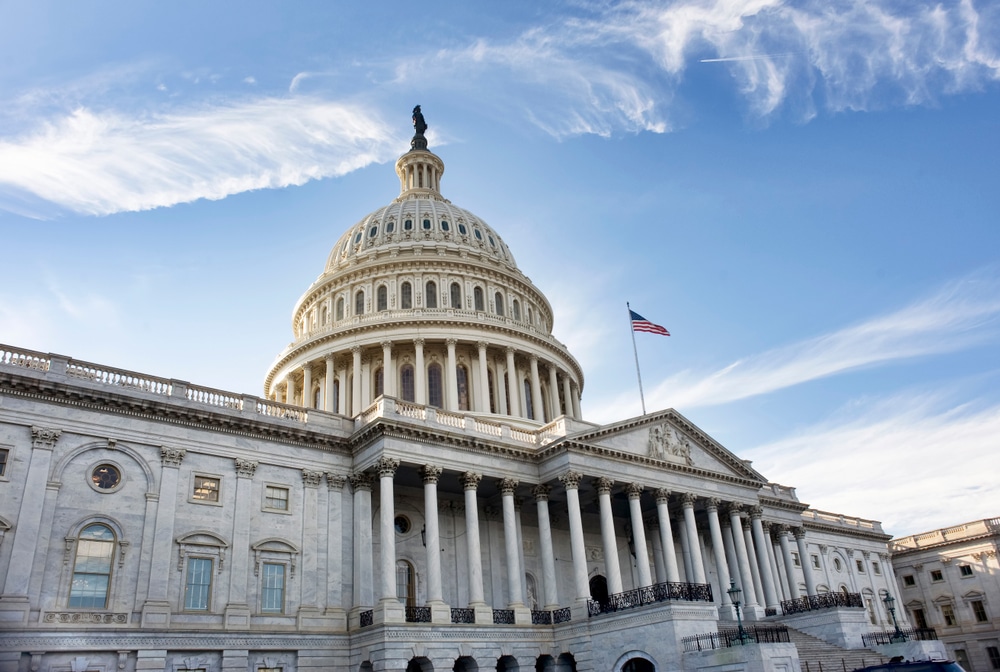PURPA 101: How a 45-Year-Old Law Impacts Solar EPCs Today

When the Public Utility Regulatory Policies Act (PURPA) was signed into law on November 9, 1978, it put the wheels in motion for renewable energy to thrive.
PURPA was designed to address an oil crisis that had gripped the United States throughout the early 1970s and prevent future issues from happening by fostering more domestic energy independence, and its goals were simple:
- Address and improve U.S. electric use
- Create pathways for better electrical utility energy efficiency
- Drive better rates for consumers and increase market competition
- Provide avenues for renewable energy development
At the time of PURPA’s enactment, hydroelectric was a major renewable energy player. Since then, the industry has exploded with the expansion of solar energy systems, wind turbines, geothermal, biomass, and others.
Several forward-thinking states, including New York, California, North Carolina, and Arizona, are leading the way. These states are investing in renewable energy at scale, enacting renewable portfolio standards, making permitting easier, and opening the door for companies to take advantage of substantial tax incentives.
Today, more than 21% of our energy comes from renewable sources like solar and wind. We’ve also made massive strides toward diversifying energy sources while curbing fossil fuel use and making long-term commitments to renewable energy use.
What is PURPA? What Does It Do?
Simply put, PURPA promotes energy diversification and competition in the electric generation industry. Though the word of the law sounds great, how does it translate to the real world?
Qualifying Facilities and Avoided Costs
Under PURPA, utilities must buy electricity from qualifying facilities at an “avoided cost.” This might sound like a packed sentence full of industry jargon, but the process allows utilities and renewable energy generators to work together peacefully.
The first thing to do is explain what qualifying facilities (QFs) are. A qualifying facility is an energy production site generating less than 80MW of renewable power. It can also be a small co-generation plant producing electricity and thermal energy using a singular fuel source. Depending on the situation, the site must fit the descriptions in 16 U.S.C. §796(18)(A) and 18 CFR 292.203.
Now that qualifying facilities have been explained, it’s time to move on to avoided costs. Avoided costs are the amount a utility company must pay a renewable energy generator for its energy. The cost is equal to the amount the utility would avoid by not producing the same amount of electricity but can be based on other negotiated rates.
The avoided cost rules were updated with 2005’s Energy Policy Act, removing the mandatory purchasing rule for utilities in competitive wholesale markets for qualifying facilities larger than 20 MW. The rule remained unchanged for smaller electric power generators producing less than 20 MW, even in competitive markets.
Who Benefits from Avoided Costs?
Avoided costs sound like something designed to handcuff utilities to renewable producers, but both operators benefit.
Utilities avoid generating electricity when they don’t have to, leaving room for increased capacity when more power is needed. Purchasing electricity from companies using renewable sources like solar panels and wind turbines also helps offset pollution caused by traditional fossil fuels like coal, oil, or natural gas.
Renewable energy producers benefit from avoided costs because they receive a guaranteed market to sell into. Because the utility must buy electricity from the renewable generating company, solar EPCs (Engineering, Procurement, and Construction) can better manage costs associated with installing panels, interconnections, and everything else tied to coming online.
Renewable companies also qualify for state and federal exemptions that help reduce operational friction. These include mandatory purchase agreements, interconnection guarantees, and other requirements like public utility regulation and taxation from states. The rules help get renewable projects off the ground more quickly and profitably so they can start supplying electricity to consumers.
Why PURPA Makes Sense for Solar
Although PURPA supports all types of renewable power, solar energy producers have taken advantage of the law in several ways.
Fair Competition – Consumers get lower costs for electricity based on available and affordable options. By requiring utilities to buy renewable power, consumers benefit from more energy diversity and can choose what power they want.
Environmentally Friendly – PURPA has been instrumental in adding more than 100 GW of renewable electricity to the grid. The increase in renewable power has also lowered our dependence on domestic and foreign fossil fuels while bolstering clean energy.
Better Financing – Several tax credits associated with PURPA make it easier and affordable for solar EPCs to establish energy projects. Investment Tax Credits (ITCs), Production Tax Credits (PTCs), and even property and sales tax exemptions are just a few credits installers enjoy.
Rules also provide small solar sites with a safety net in the form of guaranteed energy purchasers and markets.
PURPA Gets an Update
The 1970s had its share of turbulence, and the U.S. economy was much different than it is today.
When PURPA was signed into law, the country had just recovered from a severe oil crisis, and there were legitimate concerns about natural gas supplies. Today, we have vast natural gas stores and low-cost energy production methods.
Unfortunately, the gas crisis of the 1970s has been replaced by climate concerns, and countries are pushing to become carbon neutral by 2050. The situation has forced the U.S. to reexamine what PURPA is trying to accomplish and rework the law to fit today’s changing needs.
The law has been through several amendments, most recently in 2020. Order 872 has been controversial but modernized several parts of PURPA to fit today’s economic climate. Depending on who you ask, the changes aren’t all for the better, but the goal is to make things as fair as possible for solar installers, utilities, and end consumers.
Avoided Costs Get Adjusted
In the early days of PURPA, utilities could be locked into long-term fixed energy rates that sometimes meant paying far more for electricity than it cost to produce.
The new rule allows for more flexibility in pricing using multiple indexes and sources, making for a better, more accurate, and transparent pricing structure. Though the rule impacts costs, it doesn’t touch capacity rates, which control how much electricity is produced. Still, losing the long-term energy pricing contracts could make it harder for solar installers to finance projects.
Order 872 also changed the criteria for locking in long-term contracts. Previously, projects could lock in using power purchase or other agreements. Now it is moving toward companies showing financial viability before finalizing contracts.
The One Mile Rule
Under the old rule, capacity was capped at 80 MW for same-site facilities, including energy facilities of the same type found within a mile of a Qualifying Facility.
The new rule is similar but adds a 10-mile rebuttal. Anything further than 10 miles from the QF is now considered a separate site. This means facilities with the same power source less than 10 miles from a QF can qualify as the same site, including them in the 80 MW capacity.
Competitive Market Access
Under this rule, utilities can avoid power purchase agreements if the Qualifying Facilities can access competitive markets.
The old rule established the threshold for QFs to sell to utilities for avoided costs at 20 MW but has been lowered to only 5 MW. One wrinkle in the rule is that the lower threshold applies to power production but not co-generation plants.
Potential Concerns
Though PURPA’s amendments impact utilities and solar companies, the goal is a steady supply of clean energy from multiple sources at prices the average consumer can afford.
The changes also have the unintended effect of altering the relationship between the two entities – sometimes not for the betterment of solar installers. Ditching fixed revenue streams may create problems for companies wanting to build but can’t rely on receiving a steady check. Variable revenues mean companies are tied to the market rather than standard avoided cost metrics.
Lower mandatory purchasing size thresholds also mean less market certainty against more competition. If there’s too much risk, it could have a chilling effect on solar EPCs and other renewable builders.
PURPA Changes Are Mixed
The new rules have been around for about 3 years, and we’ve seen a few trends developing.
Solar Isn’t Slowing – It was feared at first that solar development would be shaken. If anything, the pace has increased, especially as the government pushes for renewable energy development.
Consumers Are in Control – Today’s electricity customers benefit from lower costs and have more electricity options than ever, including emerging renewable sources like solar and wind.
Utilities Made Some Gains – Utilities have the right to negotiate for variable avoided cost rates that don’t tie them to a potentially costly contract. They also have the power to define rates based on several indexes and economic factors.
Time will tell how these changes shape the industry landscape, but overall, PURPA has been a boon for the solar industry. Even as conditions change, it’s only fair the rules guiding us adapt and grow alongside it, too.


